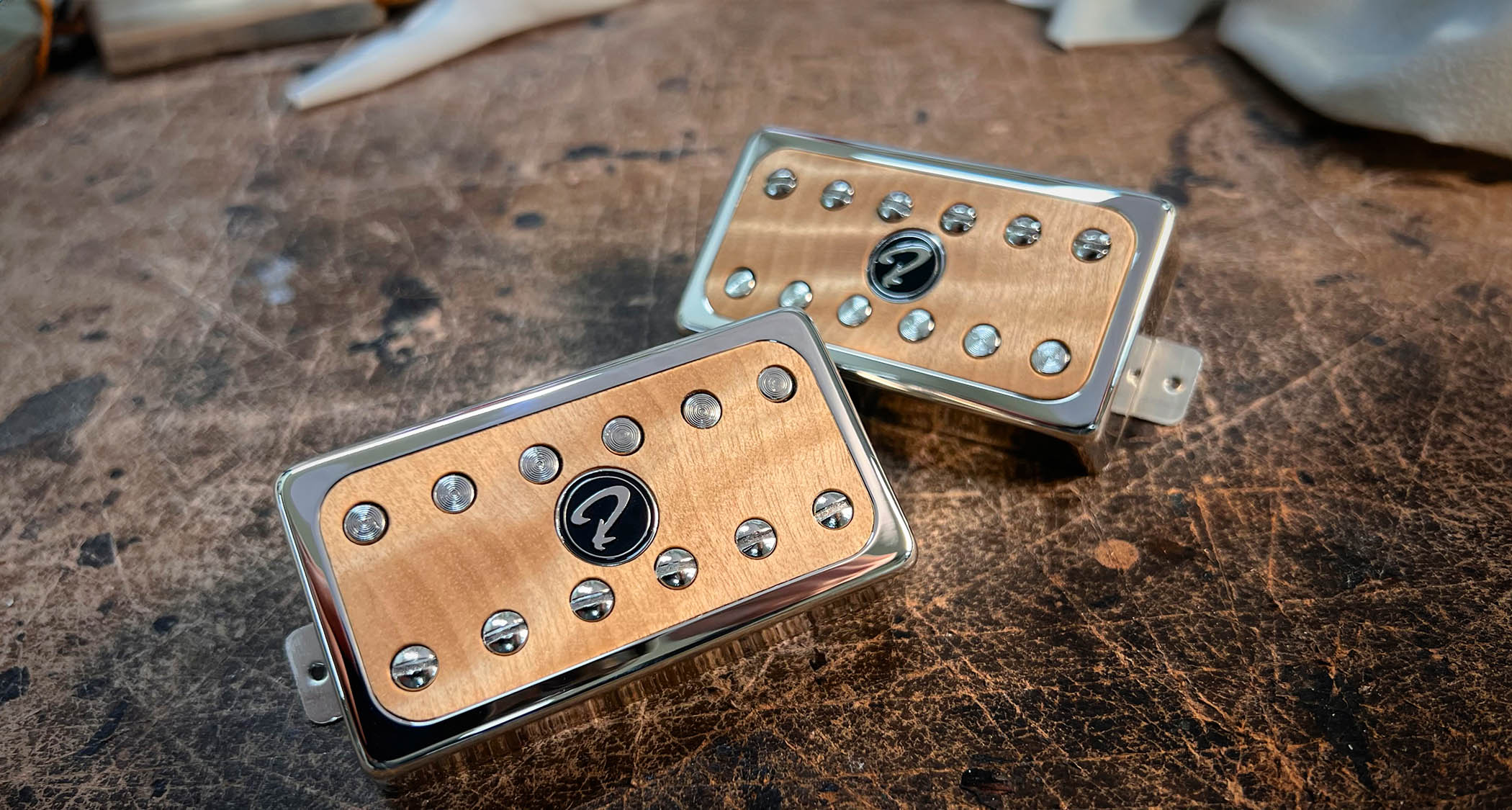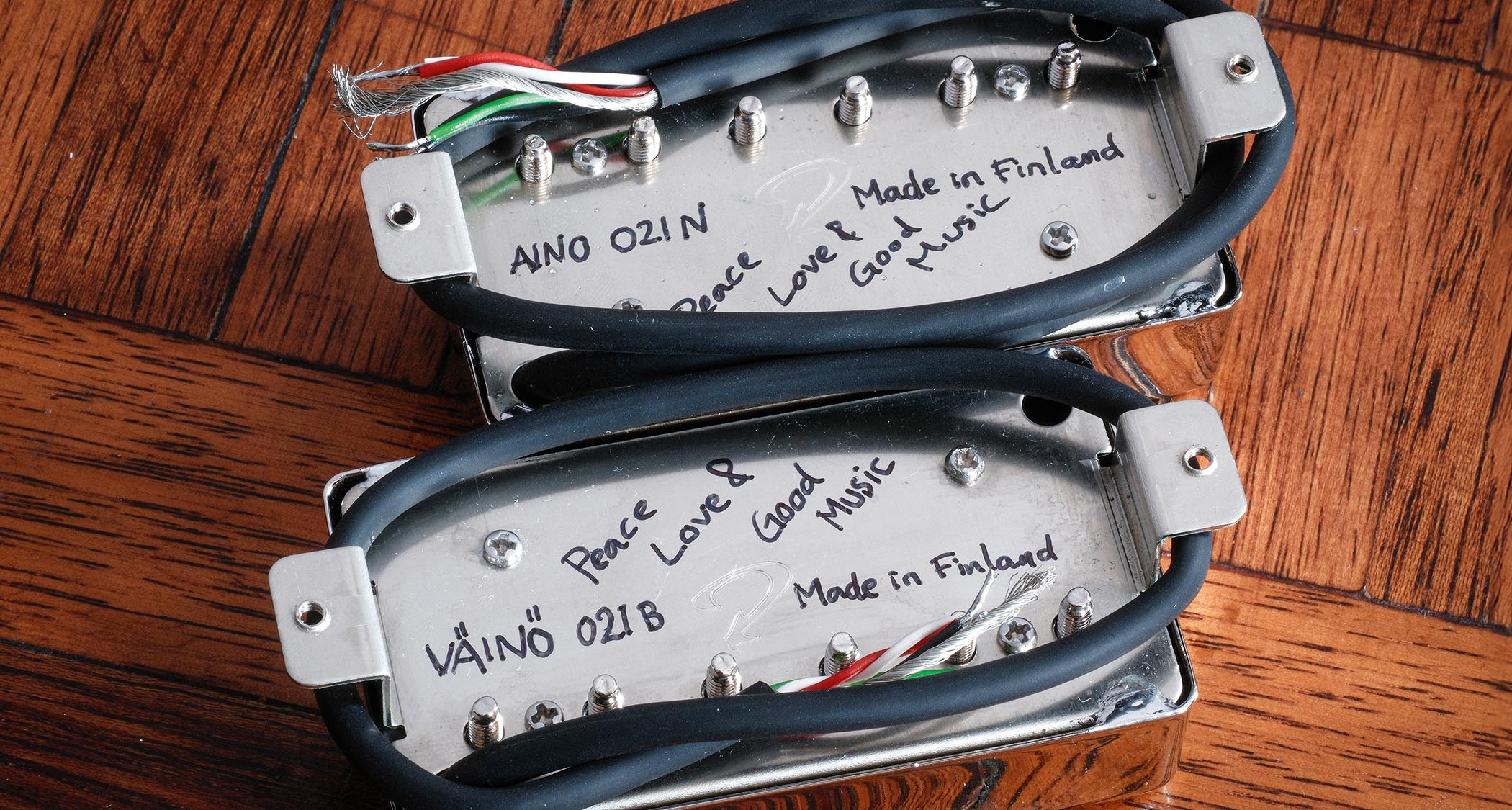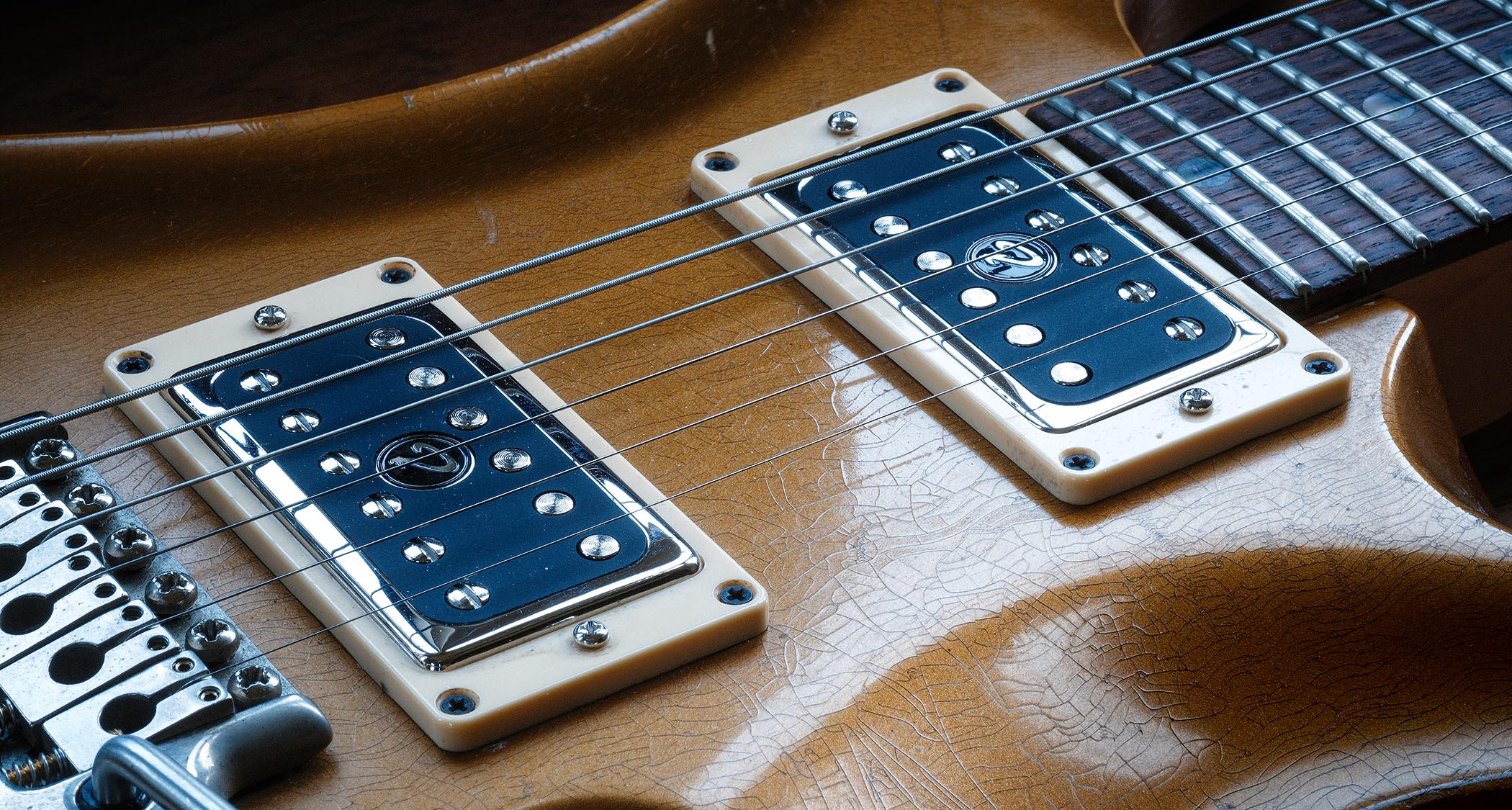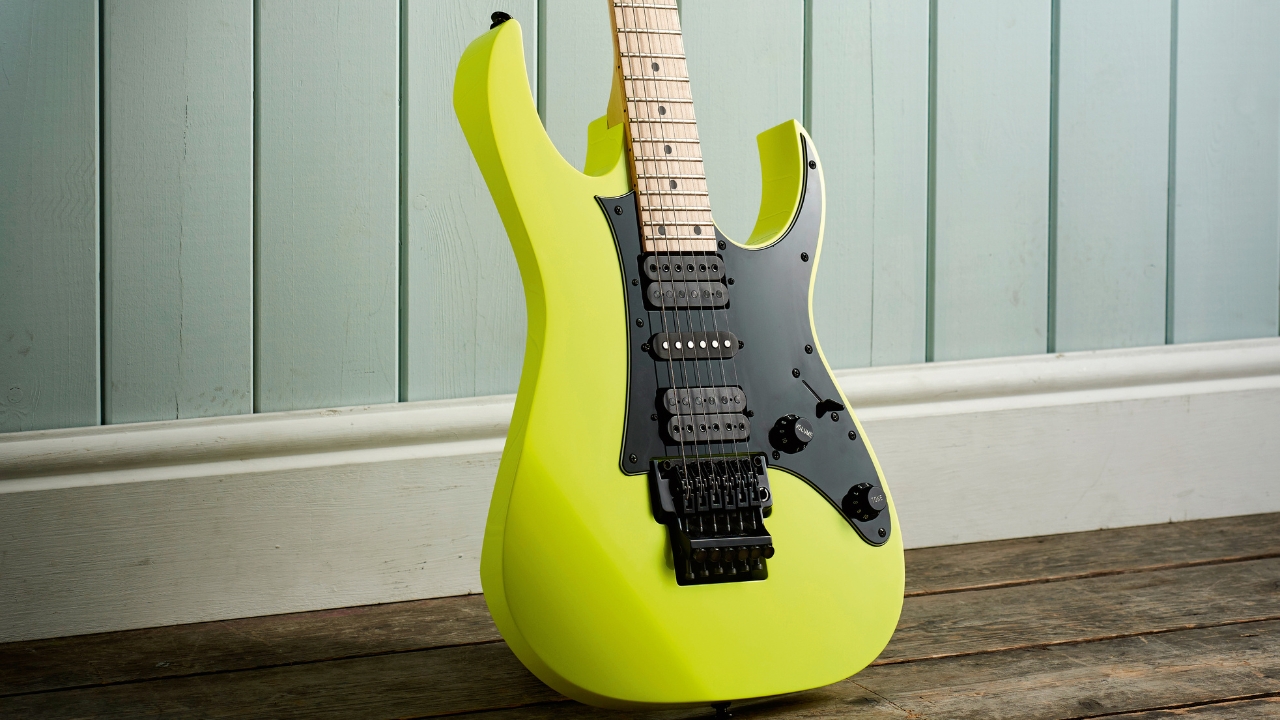“We all have easy access to the parts needed to make a pickup… You certainly don’t have to start like Seymour Duncan did with a record player’s turntable”: Why more guitar builders are making their own pickups
We speak to Juha Ruokangas about why his company took pickup design into its own hands – and then retrofitted an old PRS Custom 24 with his humbuckers to see how they sounded

Many moons ago I remember asking Paul Reed Smith why he didn’t use pickups made by the likes of Seymour Duncan. My thinking was that while Paul had studied and learned the guitar-making craft of the greats, hadn’t Seymour Duncan done the same, focusing on the pickups they used?
The question came out all wrong. “Don’t you like my pickups, David?” No, that wasn’t what I meant.
Today, though, we all have easy access to the parts needed to make a pickup: the bobbins, the magnets, the wire and even mainstream luthier suppliers such as StewMac will sell you a pretty good pickup winding machine. You certainly don’t have to start like Seymour Duncan did with a record player’s turntable.
Follow some basic and well-documented rules and you, too, can be a pickup maker. Now, if this sounds like a bit of a slur towards the diligent people that make superb pickups, it’s not meant to be. It’s just that things are changing.
Case In Point
Ruokangas has been making guitars since 1995 in Harviala in the south of Finland. If you’ve ever been lucky enough to get your hands on one, you’ll know they represent extremely high craft and quality.
From a base range of models you can typically spec up your custom dream and, to be honest, even if you have no intention of doing that I’d highly recommended a visit to Juha Ruokangas’ website, which is crammed full of hard-earned tips, advice and a lot more.

But recently I received notification that Ruokangas was now in the pickup-making game. Soon, Juha Ruokangas and I were back in contact and he said he’d love to send over a set.
All the latest guitar news, interviews, lessons, reviews, deals and more, direct to your inbox!
Now, the two humbucker pickup set – VÄINÖ (bridge) and AINO (neck) (pic 2) – come in a pretty wide range of options, from uncovered with bobbins in black, cream or white with a choice of nickel, gold or black poles (offered on all styles), through to standard nickel or gold-covered pickups (with or without the engraved Ruokangas ‘R’). The third option is partial covers, or frames, that can be nickel, gold or black-plated, like the poles.
These then come with a choice of 12 faceplates: from Arctic Birch to Brown Tortoise (pics 3 & 4). Not entirely sure what guitar I’d audition the pickups on, I ordered up the nickel open frame with a satin black face and nickel-plated poles.
I had plenty of other things on the work schedule, so I put Juha Ruokangas and his very Finnish-named pickups to the back of my mind until they arrived a little while later in a small, unassuming cardboard box.
As you can see, each is hand-signed on the back [see below], while the actual pickups appear very well made. They both come with four-conductor hook-up wire, the red and white wires are joined for standard humbucking function, black is hot, and green and the uncovered stranded wire go to ground.

The brief bit of reading I’d done about these new pickups pitched them as not another Patent Applied For clone set but certainly within that classic style. Checking the DCRs, both are under 8kohms and have a slight coil offset, too. That doesn’t tell us what they’re going to sound like, but it does give an idea of what to expect and, in my case, the sort of guitar to listen to them on.
I’d stopped using an old PRS CE 24 a while back because it wasn’t quite fitting the gig, which was a shame as it’s a lovely player, and with a now 20-year-old Clive Brown goldtop relic refinish, it’s really quite the looker – almost as vintage as its owner.
Testing, Testing…
With a standard PRS master volume and master tone circuit and a three-way toggle pickup selector switch circuit, the new pickups were a simple install.
And after a play-testing over a few days, with a lot of comparisons, what I can say is that Ruokangas is very much in the pickup business. If your tastes lie on the more classic, lower-output side of the tone tracks, you really have to hear these.
What’s different from a plethora of similar designs? Well, the wheel hasn’t been reinvented, but this is a very balanced set with three distinct voices. The bridge is most important to me and the word ‘organic’ springs to mind; it’s a really good classic rock pickup that’s very musical, open and responsive, with a near-perfect high-end that’s neither oversharp nor brittle yet has beautiful clarity.

Now, the PRS is a 24-fret guitar, so you’d expect the neck to sound a little brighter than on a 22-fretter and, again, there’s that openness and clarity here that can certainly blues-wail and yet sounds really sweet. The mixed pickup selection will be influenced by the pickup placement, but here it’s a standout: funk, bounce, almost Strat-y.
But something else is going on here. These pickups sound lively and airy like unpotted pickups, but they’re not conventionally potted and I’m not missing anything over other non-potted pickups that I’ve accessed for comparison. How so? Well, let’s find out…
A Different Path
Juha Ruokangas is extremely passionate and proud of the guitars he and his small team have hand-built over these past 30 years. But why get into the pickup business after all this time?

“When I was a young guitar maker – I started my business in 1995 – it was clear to me I could do anything that I wanted, but I couldn’t do everything because I just didn’t have the time” Juha tells us. “At that point, making pickups wasn’t an option. Also, back then the only way I could have started to make pickups was winding them myself by hand – I’d have to figure it out the hard way.
“In order to be able to master this I’d need to wind hundreds, thousands. And even if I did figure it out, how could I tell someone else who I might employ how I wanted them to be wound? If I’m going to take all the time to learn this, then pickup making, not guitar making, is going to be my career.
“But around four or five years ago I started flirting with the idea again,” he continues. “Now, we make guitars totally by hand; we don’t have any CNC or other technology of any sort. But I’d started seeing these companies – there’s one in the UK, for example – that make super-efficient pickup winding machines that are fully automated and you can do the wire tension, you can simulate the scatter-wind… all these processes. But, importantly, you can record these things and programme them down to the finest details: you can refine recipes for pickups.”

“I started to realise we’d entered an age where it would be possible to enter the craft of pickup making from a totally different perspective. That’s when, let’s say, the coffee table talk started at our ’shop. Me, my wife [and business partner, Emma Elftorp] and the rest of the guys started discussing it: ‘What if we got one of these machines? We could start a pickup-making hobby.’ Not to take it too seriously but to start understanding how pickups can be made in the modern world.
“They’re not cheap machines, but they are accessible to a small business. So we got a machine a couple of years ago and started playing with it. I invited a Finnish luthier who had been hand-winding pickups all his life to come and spend a couple of days with us.”

After plenty of trial and error over the course of eight months or so, typically making a new set most mornings and then listening to and comparing them with other pickups as the day went on, Juha and the team were happy with the pickups – except for one thing…
We almost gave up. I knew I didn’t want unpotted pickups, but I didn’t want potted pickups, either!
“Then we hit the real dead-end, which was the potting,” Juha reveals. “We almost gave up. I knew I didn’t want unpotted pickups, but I didn’t want potted pickups, either! [laughs] When I designed my [single-cut] Unicorn model in 2008/’09, the first humbuckers Harry Häussel [one of the many respected pickup makers Juha has used over the years] made for that guitar were unpotted because I wanted that nuance and element to the sound. But immediately I ran into the problems.
“With my own band, a three‑piece, we play in a rehearsal studio and I’d crank up my Marshall JCM800 and I couldn’t deal with the microphonics. So we had that conversation – yes, we can pot them. Again, it was either/or.
“You see, all the early versions of the pickups over those eight months were unpotted, but when we thought we’d created what we really liked, after potting them they became, well, just like ordinary, regular humbuckers.”
“That’s when I talked to my friend Lassi Ukkonen who helped us with our Valvebucker circuit years ago – he’s a retired electronics engineer who has worked all his life with guitar and hi-fi audio. I unloaded my frustrations on him.
“Well, he started talking about coils, inductance, capacitance, Q factor… and all these things in mathematical terms and I’m like, ‘Whoa!’ I said, ‘Look, I want to keep the cake and eat the cake!’
“But it was Lassi who brought up the idea of trying to do it in a controlled manner: choose part or parts of the coil during the process of winding – either at the beginning, the middle or the end, somewhere – to solidify a certain amount of the coil. I’m not going to be totally open about it obviously, but he had the theory and believed there was a chance to lose the microphonics but still keep that ‘air’ in the sound.”
On the evidence we’ve heard, the resulting Flux-Coil Stabilisation really does seem to keep the life of the sound but cure the microphonics. Maybe guitar makers turning to pickup making isn’t such a bad thing?
Mod spec
- Product: Ruokangas VÄINÖ bridge humbucker
Price: From €190 - Tech spec: Ruokangas Flux-Coil Stabilisation, slightly asymmetrically wound coils, 4-conductor wiring
- Magnet: Alnico IV
- DCR: 7.95kohms
- Options: Uncovered, covered or open‑frame with 12 different faceplates, polepiece and cover/frame plating
- Product: Ruokangas AINO neck humbucker
- Price: From €190
- Tech spec: As VÄINÖ (above)
- Magnet: Alnico II
- DCR: 6.9kohms
- Skill level: Easy to fit if you can solder; coil junction leads are pre-soldered so all you need to do is solder the hot and ground wires
- Contact: Ruokangas Guitars
- This article first appeared in Guitarist. Subscribe and save.

Dave Burrluck is one of the world’s most experienced guitar journalists, who started writing back in the '80s for International Musician and Recording World, co-founded The Guitar Magazine and has been the Gear Reviews Editor of Guitarist magazine for the past two decades. Along the way, Dave has been the sole author of The PRS Guitar Book and The Player's Guide to Guitar Maintenance as well as contributing to numerous other books on the electric guitar. Dave is an active gigging and recording musician and still finds time to make, repair and mod guitars, not least for Guitarist’s The Mod Squad.
You must confirm your public display name before commenting
Please logout and then login again, you will then be prompted to enter your display name.


